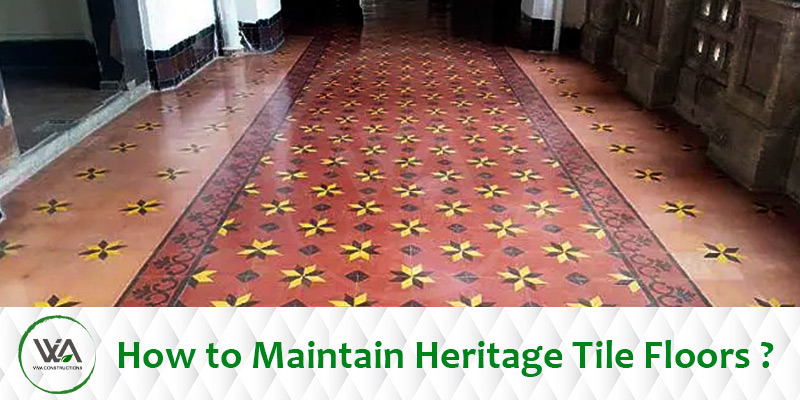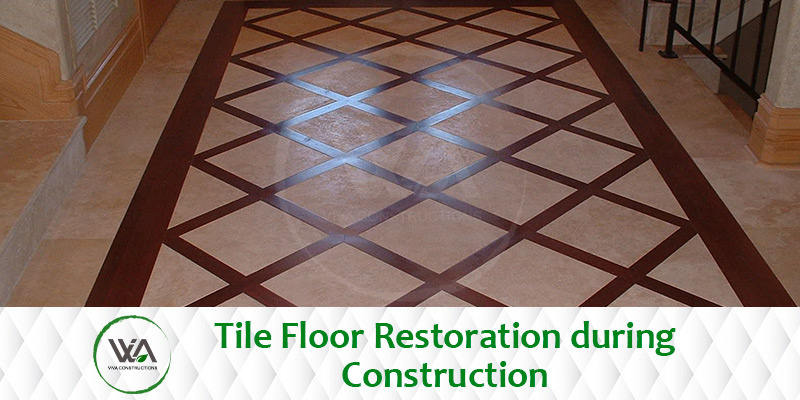Ancient structures often include decorative heritage tiles on their walls, floors, and roofs. They have been employed as a building material for many years, both glazed and unglazed, functionally and aesthetically. Ceramic may be relatively stable, but like other building materials, it is susceptible to structural flaws and floor damage.
What kind of damage will heritage tiles cause?
Tiles are tilted where the construction material and the exposed environment meet. They are plagued by structural flaws and water intrusion on the building side. On the exposed side, they are vulnerable to environmental variations and intentional or unintentional injury. Typical damages include:
Separation and tenting

When tile rims rise and tremble, this is called “tenting.” This type of tile separation from the substrate is due to the ground movement, moisture infiltration, rapid drying out, or unsuitable bedding materials.
Loss of glazing since most heritage tiles no longer have their protective lead glaze, they are most vulnerable to abrasion and fracture, especially if they are present outside.
Cracking, flaking, abrasion, and crumbling
Tiles are especially problematic in high-traffic areas like kitchens and dairy rooms. Floor tiles are most at risk of abrasion from foot traffic because it spreads dirt and filth.
Biological growth
External tiles are susceptible to organic growth (algae, lichen, and moss), which can eat away at the floor, penetrate the clay body, or form below and push tiles away. It may also damage the surfaces of damp, poorly ventilated indoor places.
Salts soluble
Salts are naturally present in the soil, building materials, and tiling. Changes in the environment can cause them to crystallize underneath the tile or between the bedding mortar and the tile, which can cause significant damage.
How are damaged and mended tiles handled?
Preventative measures should always be taken into account before applying tile treatments. For any restoration work on pre-business tiles, you must only hire specialists in tile and mosaic designs in indexed buildings where you will need an indexed building consent.
Common types of ancient tile remedies include:
Removing a bacterial influx

With routine cleaning, you can control the growth of microbes on hard surfaces. We do not advocate using biocides as a long-term control strategy. Increasing airflow while reducing moisture is generally the best course of action. Keep in mind, if salts are present, changing humidity and temperature can also cause injury.
Cleaning a heritage tiles
It’s crucial right now to avoid over-wetting any heritage tiles throughout the cleaning process. The wetness should cause the bedding to melt and the tiles to come loose. Additionally, salts could ignite. A conservator with expertise in their repair is responsible for cleaning medieval tiles. The major commercial tiles are durable enough to withstand the small number of chemicals present in pH-neutral detergents. Use caution when using products with an acid or alkali base because they can affect the quality of glazes. It is no longer necessary to employ hard abrasives or wire wool brushes.
Regrouping and bedding

It is essential to use mortars of the right strength when rebidding and regrouping heritage tiles.
Protecting
Mats are necessary for areas with high foot traffic to remove dirt from shoes. There may be a defensive cover, or “drugget,” over important historic tiles (with an under layer). A conservatory should be used to ensure that the installation is done correctly and under supervision. On moist floors, it’s not a good idea to have carpets or rugs because they could promote the growth of mildew. Pre-business tiles shouldn’t be coated unless there are special conditions. Modern coatings should only be used with caution because they have not been thoroughly tested on historic floors.
Replacing
It may be necessary to fill in missing heritage tiles with replicas in some situations, such as large commercial tile schemes, areas with considerable foot traffic, or geometrically patterned flooring.


